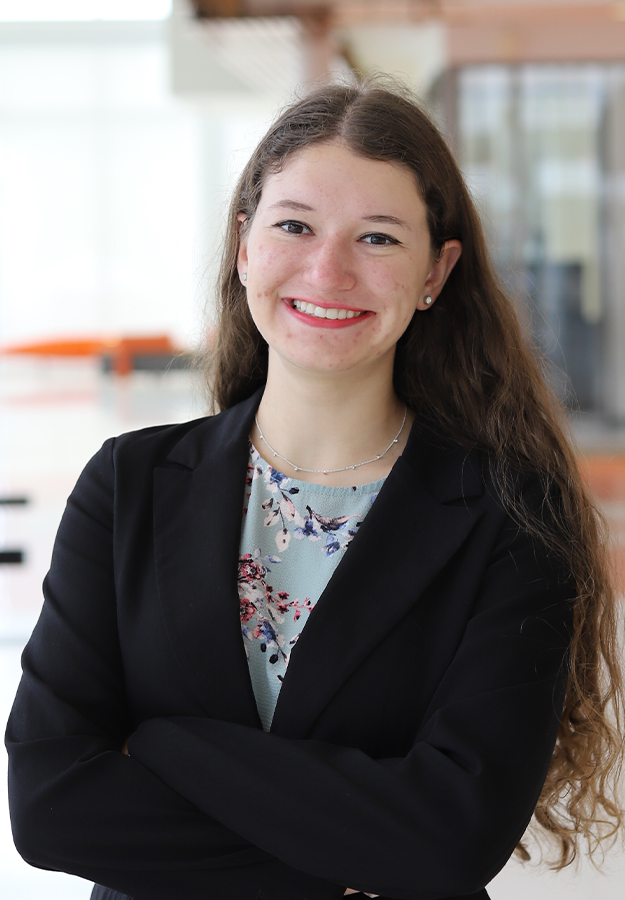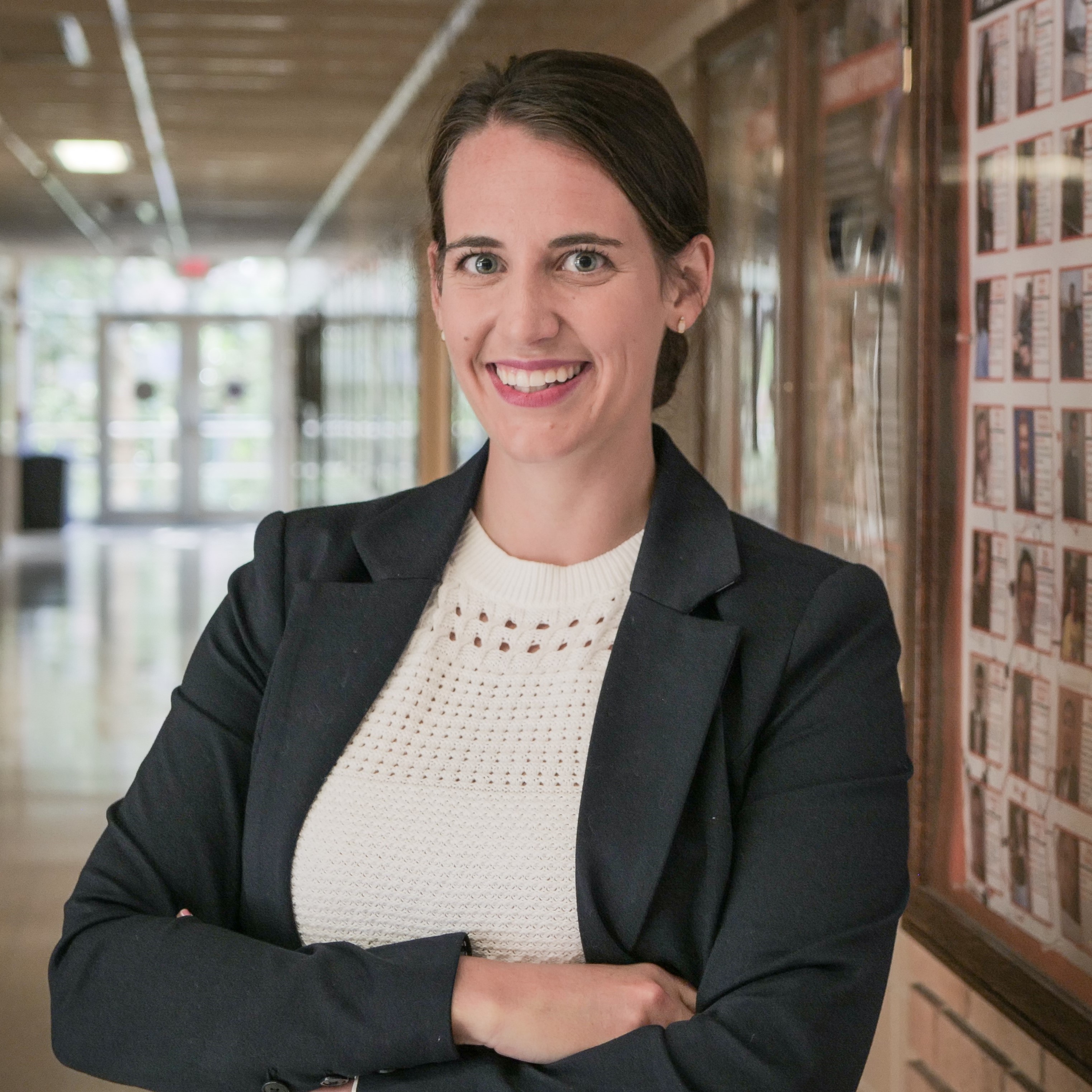Drug Delivery
(L-449) Pharmacokinetics of Nerve Regenerative Polymersomes Post Sciatic Nerve Injury in Rats

Kayleigh Trumbull
Undergraduate Student
Clemson University
Central, South Carolina, United States- PS
Pabi Sahoo
Research Assistant Professor
University of South Carolina
Columbia, South Carolina, United States - JT
Jeffrey Twiss
Professor, SmartState Chair in Childhood Neurotherapeutics, Associate Dean for Research and Graduate
University of South Carolina, United States 
Jessica Larsen (she/her/hers)
Carol and John Cromer ’63 Family Endowed Associate Professor
Clemson University, United States
Presenting Author(s)
Co-Author(s)
Primary Investigator(s)
Upon injury, neurons begin to regenerate immediately, but their growth is inhibited by the formation of stress granules—clusters of untranslated mRNAs—across the cells. Delivery of a nerve-regenerative peptide to disassemble these stress granules presents a possible treatment for injuries in the peripheral nervous system (PNS). The current challenge facing this method is the presence of highly selective membranes known as the blood-brain (BBB) and blood-nerve barrier (BNB), which block nearly all small molecules and render treatment of the central nervous system (CNS) and PNS extremely difficult. Polymersomes are self-assembling vesicles made from amphiphilic block copolymers, capable of encapsulating both hydrophilic and hydrophobic molecules. Polymersomes can be fine-tuned for membrane structure, size, vesicle shape, and membrane thickness in drug delivery applications. In this project, we develop polymersomes capable of delivering a nerve-regenerative peptide through the BBB and BNB in treatment of nerve and spinal cord injuries. By manipulating the surface binding properties of polymersomes, we hypothesize that we will be able to customize them for targeted delivery of a nerve-regenerative peptide with appropriate peptide release windows for various types of nerve injuries and thus create a customizable approach to neurological repair. We will also assess the efficacy of administering the polymersomes via intranerve (IN) versus intramuscular (IM) injection immediately after the creation of a sciatic nerve crush injury (SCNI) model in vivo.
Materials and Methods:: Polymersomes were synthesized using poly(ethylene glycol)-b-poly(lactic acid) (PEG-b-PLA) via the solvent injection method. Different-sized polymersomes were synthesized using various concentrations of copolymer and syringe pump speeds while maintaining a constant 1mL syringe and 20G needle for all syntheses. The polymersomes’ Z-average diameter and zeta potential were measured using dynamic light scattering (DLS). After lyophilization, polymersomes were loaded either with a treatment peptide (in collaboration with Dr. Jeffrey Twiss’ lab at the University of South Carolina), a control peptide, or Alexa Fluor 647 (AF647), which can be imaged in vivo via IVIS Spectrum. Polymersomes were synthesized to bind targeting ligands apolipoprotein E (ApoE3) through amine-reactive chemistry or rabies virus glycoprotein (RVG) peptide via maleimide-cysteine chemistry. A sciatic nerve crush injury (SCNI) model was created on the hind legs of Sprague Dawley rats. A small incision was made at the base of the femur, the muscle separated in order to locate the sciatic nerve. The nerve was hooked, then crushed with forceps for 20 seconds, released for 15 seconds, and crushed a second time for 20 seconds. 10 μL of polymersomes containing the appropriate body weight-based dose of AF647 was injected intranervously (IN) or intramuscularly (IM) at the injury site using a Hamilton syringe. Fluorescence signal was measured via IVIS and blood plasma sampling at 0.25, 1, 4, 24, and 48 hours post-injection to determine pharmacokinetic profiles of the polymersomes.
Results, Conclusions, and Discussions:: PEG-b-PLA polymersomes synthesis was optimized to yield polymersomes of the appropriate size, variability, and stability for crossing biologic barriers. PEG-b-PLA polymersomes were also conjugated with ApoE3 and RVG-Cys neuronal ligands for increased specificity (Table 1). These polymer-ligand combinations were then assessed in vivo. Figure 1 shows the fluorescent signal before and after IN administration of PEG-b-PLA polymersomes tagged with RVG-Cys. The polymersomes stayed localized to the injection site for at least the first 4 hours post-injection, and likely through the 48-hour time point. After 48 hours, polymersomes injected appear to have moved into the animal’s excretory organs, indicating that they will be naturally excreted from the body. Figure 2 shows fluorescent signal after IM injection, which does not stay quite as localized to the injection site as the IN injection. There is fluorescent signal in the animal’s feet and tail and the scale bar is an entire order of magnitude smaller than the one generated for the IN injection. This indicates the polymersomes are traveling to other parts of the body through the bloodstream instead of staying at the injury site. Figure 3 shows a side-by-side comparison of the fluorescent signal after IN and IM injection. The signal near the IN injection site is much brighter than the IM injection site 1-hour post-injection and lingers for at least 48 hours post-injection while the signal at the IM injection site disappears after the 1-hour timepoint. Figure 4 shows the mass of AF647 circulating in the animals’ blood plasma post-IM and IN injection. The higher AF647 content present in the plasma after IM injection indicates that a higher proportion of the polymersomes injected have traveled away from the injury site and entered the bloodstream at a level that is statistically significant 0.25 and 24 hours post-injection. These results effectively show how polymersomes can be customized to protect and deliver a drug through the BBB and BNBs via targeting ligands, enhancing the pharmacokinetic profile, and improving nerve regeneration. These capabilities seem promising in the frontier for improved neurological therapeutics.
Acknowledgements (Optional): :
References (Optional): :
